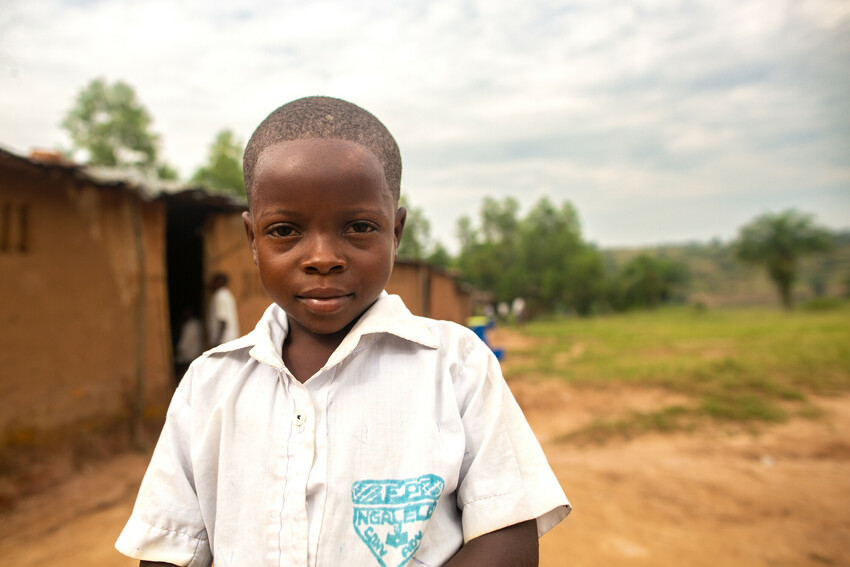When I first met Mado in Febraury of 2016, she was a little over two years old. She was so severely malnourished that she couldn’t walk or even stand. She sat in her mother’s lap, lethargic and still. Her arms barely larger than my thumb in diameter. We were there with a team of community health workers, called RECOs in DRC, who had recently been scouring the village, going to every single household, to look for children like Mado. They were there to teach her mother how to make a therapeutic porridge from locally sourced ingredients. This was the innovation of our program, there was no need for a struggling mother to depend on therapeutic foods imported from overseas. Everything she needed was right there next door at her local market.
The Recos taught her mother how to make the porridge and soon Mado took her first bite. We all looked at each other and smiled as she ate spoonful after spoonful of porridge. What an awesome moment to witness a child in need get the help that she deserves.
Six months later I returned to Kananga and timidly asked our local nutrition expert about Mado. I was worried that he would reply that she didn’t make it, for this happened sometimes in those days. Program failure is a necessary part of the process. It’s how we learn what works and what doesn’t. But when that failure results in the loss of a small child, let’s just say it’s really hard to swallow.
He took me to see her for myself. We walked up the path leading to her house and already I could see her running around her yard playing with the other kids. I was blown away. She was a normal kid, laughing and smiling and asking me for money. But Mado’s story doesn’t stop there.
I went back to her village this past march, six years after the first visit. As I walked up the path to her house, I once again felt so anxious to learn of her condition. It had been a long time since anyone had visited her, and no one knew her status. Anything could have happened. She could have contracted malaria, diarrhea, a simple infection from a cut that could take her out, the list went on and on in my head. When we got to her yard her mother came out of her house. But no Mado. Her and my colleague spoke briefly in Tshiluba. I watched the mother’s face for signs of sadness. I couldn’t tell what was going on. My colleague began to leave, and I followed. “What happened? Where is she?” I asked eagerly.
He answered, “She is at school.”
My heart was overwhelmed with joy when we found her in her classroom, repeating words and learning to write. This was the ultimate success story.
And the cool thing is, she is not the only one.
She is only one of more than 481,000 children who have recovered from malnutrition because of OUR WORK at IMA World Health. And that’s just during the ASSP and ASSR projects. Now we are starting the SEMI project, and because of us, that number is going to rise.







